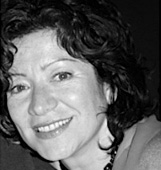 By Isabel Perez
By Isabel Perez
When it comes to producing documentary much of the general public knows little of the work producers actually do. Most people have some understanding of the roles performed by creative members and crew involved in film, such as the writer, director, editor, director of photography, composer and so on.
It is common for a line producer to be employed when the producer doesn’t have the time to deal with the day-to-day business of the production. This may result from the producer working very closely, creatively, with the director, and/or there are other productions going on at the same time, making it difficult for the producer to be across all producing aspects.
In the case of In the Company of Actors, Ian Darling, the director and producer, needed a line producer who could deal with producing responsibilities during pre- production, the shoot and post-production, in order for him to concentrate on the task of directing.
These responsibilities included: negotiating fees, terms and conditions with crew, suppliers, and organisations involved in the documentary (including unions); addressing and attending to all necessary agreements and permissions required to make the film, such as the documentary subjects, locations, and related clearances for artistic, literary, cinematographic and musical works; ensure adherence to the budget; assess and address the needs of the production and crew; provide support to the director, creative team and crew; ensure the production adheres to industry codes of practice and Occupational Health & Safety requirements and so on!
A line producer can also take on tasks that a production manager would normally be responsible for, this would primarily involve managing the budget and scheduling. I also performed the duties of a production manager, and like many documentaries, with small and tight budgets, wore other crew hats including that of runner.
One of my first tasks on the job was to clearly understand the director’s vision for the film, and what he wanted to achieve. At the heart of the film was the importance and celebration of theatre – Ian wanted to show its magic unfold before our eyes. I had to extract as much information from Ian as possible to create a budget and schedules for the various Sydney and New York shoots.
Normally, I budget and schedule by analysing, breaking down and discussing the critical production components with the director, and planning and ordering all the shooting elements contained in a treatment (an extended outline of what the film will be about) or a documentary script of the intended film. However, in this instance, I didn’t have either treatment or script, so my comprehension of Ian’s vision and style for the film was fundamental. Ian had a clear idea of what the film would involve, and how he wanted to go about capturing the story.
Equally – as much of the filming would take place in the theatre – I had to create and maintain close relationships and communications with various members of the Sydney Theatre Company (STC), and the Brooklyn Academy for Music (BAM) in New York. Both theatre companies would affect the production budget and schedule in a number of ways as filming would be dictated to a degree by rehearsal schedules, venue regulations and staffing requirements.
Evaluating and then planning for the necessary production elements and phases is required for the smooth running of the production. A thorough production evaluation informs the production methodology, that is, what is the scope and scale of the project, and how will it be run and managed? It saves money, time, and reduces the enormous potential for frustration during the shoot and later in post-production. Each production phase impacts on the other, and there are budget considerations and consequences every step of the way. It also determines how best to support the director as well as the crew.
In the Company of Actors, is an observational style film, and would contain a small crew. There was the director, cinematographer, and when allowed, a sound recordist. The director’s aim was not to interfere with or obstruct the process of theatre and its behind-the-scenes magic – the crew would function like a fly on the wall, so to speak. It was beneficial that Ian had already worked with Simon Smith, the cinematographer, on past productions.
One of my key objectives was to keep costs down, yet show high production value on the screen — getting the biggest bang for your buck, without having to undermine quality. With years of experience behind me, I was confident we wouldn’t have to employ further production crew. We managed this by deciding that I would remain in the Sydney office and attend to the production and its requirements from a distance. Having planned and scheduled thoroughly we did not employ the services of a local fixer in New York (similar to a production manager in a foreign country). Instead, I would establish, and maintain communication and rapport with key individuals and organisations in order to facilitate on the ground production support for the crew – dealing with locations, travel, accommodation, BAM, unions, and New York schools whose students were to attend the preview matinee prior to the Gala Opening.
Working this way meant that I would have to be on call and deal with any crisis by trouble shooting as issues arose. Naturally, this also meant managing the time difference when the crew were in New York too.
There were two New York shoots. The first accompanied the STC Company to BAM and filmed during the end of rehearsal, the transfer to the theatre and up to opening night. The second was near the end of the performance season. The first trip would prove more challenging as the crew had to become familiar with the new locations, and did not have a production crew at arm’s length. The second trip was shorter, and the director and cinematographer (the sound recordist was not part of the crew on this trip) had established a good rapport with BAM personnel, who were helpful and supportive.
Filming at BAM required considerable attention to detail for scheduling and budget. In the U.S all filming within the theatre or venue incurs fees where crew are required to be in the venue or are part of the production crew, regardless of whether the crew are to appear on film or not. Consequently, the shooting schedules designed for BAM changed on many occasions as recording the “what, who, where and when” impacted on the budget. There was constant negotiation on this front, and the filming elements shifted as we tried to stay on budget and capture the narrative components needed to tell the story.
Following is an overview of key tasks:
- Create, manage and supervise the production budget.
- Plan and generate the necessary schedules for the Sydney and two New York shoots.
- Create and execute the various agreements for: crew; STC and BAM; releases and locations.
- Obtain the necessary insurances, and ensure the safety of crew at all times.
- Keep open the channels of communication with crew and all third parties involved with the production.
- Negotiate all location access and fees. In all instances we were able to negotiate for location fees to be waived. (Locations such as Manhattan and public places throughout Brooklyn and Sydney).
- Schedule travel and accommodation- and where possible negotiate rates on all travel requirements.
- Negotiate clearances: artistic, music and cinematographic works. Artists, publishers, broadcasters and agents were all very understanding and generous. In the end, Ian decided against using the archival footage from the 2004 Hedda Gabler press conference in Sydney. This was footage that had been included in various cuts of the film but didn’t make it to lock off picture.
- Liaise with the accountant, and be across cost reports. Keep track of and check invoices and payments.
- Discuss, plan and schedule the post pathway – this would involve the entire edit process, and include: transcriptions, sound, music, online, grade and delivery formats (HDV, Digital Betacam etc).
- Negotiate and liaise with post-production facilities. Provide brief and get quotes for all off-site post production processes. (For example, grading, film sound design and mixing).
- Negotiate terms and conditions, and contract composer. Schedule delivery dates and items.
- Negotiate rates with suppliers for stock and gear.
- Trouble shoot and deal with emergencies and keep production on schedule and on budget.
- Whilst the convention in Australia is that documentary subjects don’t receive payment as such for their involvement we were required to liaise and negotiate with the MEAA (Media Entertainment and Arts Alliance) on fees for the principal documentary subjects. The MEAA is the peak union organisation in Australia for artists and crew who work in film, television, theatre and other performing arts industries.
The above items focus on integral duties and areas of responsibility I undertook. In the Company of Actors was a wonderful project to work on, and the team at Shark Island Productions, although small, worked efficiently and effectively. It gives me immense satisfaction to have been involved in this production, and also pleasure in knowing that I played a role in helping the director realise the film he set out to make, which will hopefully make a significant impact on educating students throughout Australia and the world.
Isabel Perez
Line Producer
In the Company of Actors
May 2007

